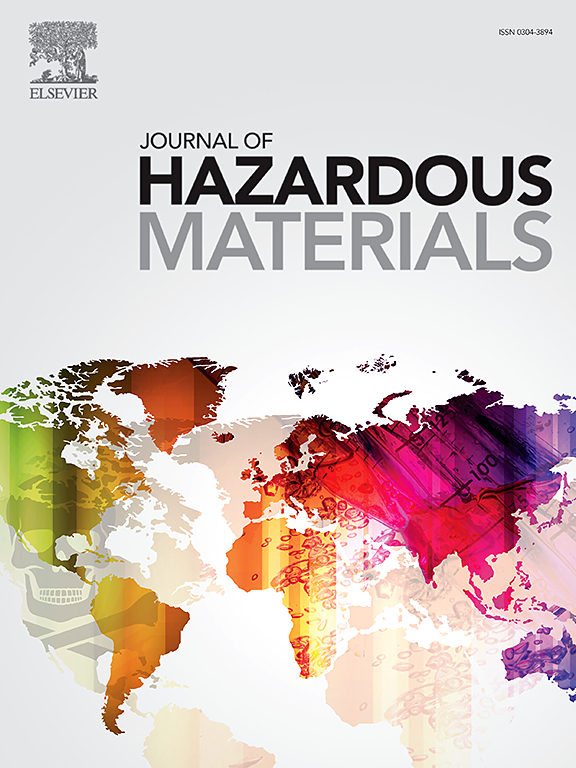Effects of norfloxacin on the interaction between duckweed and its growth-promoting bacterial assemblages
IF 11.3
1区 环境科学与生态学
Q1 ENGINEERING, ENVIRONMENTAL
引用次数: 0
Abstract
The entry of antibiotics into aquatic environments can negatively affect various organisms. However, the specific effects of antibiotics on the interactions between aquatic plants and its growth-promoting bacterial assemblages (GPBA) remain inadequately explored. Thus, this study aimed to examine the performance of mono-culture and co-culture systems, involving duckweed and its GPBA, under varying norfloxacin concentrations (0, 0.05, 0.2, 0.5, and 1 mg L-1), to elucidate the effects of norfloxacin on the interactions between duckweed and GPBA. The results revealed that norfloxacin concentrations of ≥ 0.5 mg L-1 significantly inhibited duckweed growth and diminished the growth-promoting abilities of GPBA by reducing the relative abundances of plant growth-promoting bacteria (e.g., Pelomonas, Ensifer, Acidovorax and Sphingomonas). Furthermore, physiological analysis of duckweed suggests that GPBA may enhance the antioxidant capacity of duckweed, thereby alleviating membrane damage induced by norfloxacin. Additionally, norfloxacin concentrations of ≥ 0.2 mg L-1 significantly reduced nitrogen and phosphorus removal efficiencies in the co-culture system. Overall, norfloxacin exerted a more pronounced negative impact on duckweed growth, microbial community and nutrient removal in the co-culture system compared to the mono-culture system, indicating that norfloxacin poses a heightened risk to the co-culture system by disrupting the interactions between duckweed and its GPBA.

诺氟沙星对浮萍及其促生菌群相互作用的影响
抗生素进入水生环境会对各种生物产生负面影响。然而,抗生素对水生植物及其促生长细菌组合(GPBA)相互作用的具体影响仍未得到充分探讨。因此,本研究旨在考察不同诺氟沙星浓度(0、0.05、0.2、0.5和1 mg L-1)下浮萍及其GPBA的单培养和共培养体系的性能,以阐明诺氟沙星对浮萍与GPBA相互作用的影响。结果表明,浓度≥0.5 mg L-1的诺氟沙星通过降低植物促生菌(如Pelomonas、Ensifer、Acidovorax和Sphingomonas)的相对丰度,显著抑制浮萍的生长,降低GPBA的促生能力。此外,对浮萍的生理分析表明,GPBA可能增强浮萍的抗氧化能力,从而减轻诺氟沙星对浮萍膜的损伤。此外,诺氟沙星浓度≥0.2 mg L-1显著降低了共培养系统的氮磷去除效率。总的来说,与单一培养相比,诺氟沙星对共培养系统中浮萍生长、微生物群落和营养物质去除的负面影响更为明显,这表明诺氟沙星通过破坏浮萍与其GPBA的相互作用,对共培养系统造成了更大的风险。
本文章由计算机程序翻译,如有差异,请以英文原文为准。
求助全文
约1分钟内获得全文
求助全文
来源期刊

Journal of Hazardous Materials
工程技术-工程:环境
CiteScore
25.40
自引率
5.90%
发文量
3059
审稿时长
58 days
期刊介绍:
The Journal of Hazardous Materials serves as a global platform for promoting cutting-edge research in the field of Environmental Science and Engineering. Our publication features a wide range of articles, including full-length research papers, review articles, and perspectives, with the aim of enhancing our understanding of the dangers and risks associated with various materials concerning public health and the environment. It is important to note that the term "environmental contaminants" refers specifically to substances that pose hazardous effects through contamination, while excluding those that do not have such impacts on the environment or human health. Moreover, we emphasize the distinction between wastes and hazardous materials in order to provide further clarity on the scope of the journal. We have a keen interest in exploring specific compounds and microbial agents that have adverse effects on the environment.
 求助内容:
求助内容: 应助结果提醒方式:
应助结果提醒方式:


